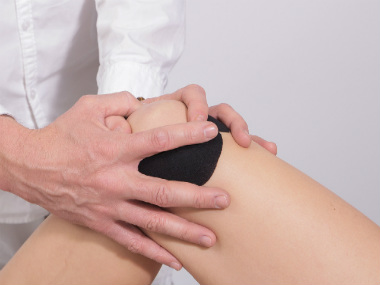Editor’s note: This article, originally published in October 2019, is being republished on the occasion of World Arthritis Day today. Arthritis and Rheumatism International (ARI) earmarked 12 October as World Arthritis Day in 1996 to raise awareness around this debilitating condition. A few years ago, another organization — the European League Against Rheumatism, or EULAR — launched the “Don’t Delay, Connect Today” campaign to take the cause forward. EULAR’s ongoing campaign emphasises the importance of early detection and treatment to prevent lasting damage as a result of arthritis. Each year, EULAR also picks a theme for arthritis day. This year, EULAR’s theme for World Arthritis Day is Time2Work - a message to all companies to be more sensitive to the needs of employees living with arthritis.
What is arthritis?
Arthritis literally means inflammation of the joints - it leads to pain and stiffness in the joints. There are various types of arthritis, including osteoarthritis (the most common reason for age-related joint pain worldwide) and rheumatoid arthritis (an autoimmune condition that can affect people at any age). World Health Organization data show that 0.3-1% of the world’s population has rheumatoid arthritis and, the world over, 9.6% of men and 18% of women over 60 have “symptomatic osteoarthritis”.
Arthritis in India
According to one estimate, 15% of Indians who have a musculoskeletal condition have some form of arthritis. The most common types of arthritis in India are osteoarthritis, rheumatoid arthritis and gout. In the spirit of raising awareness on World Arthritis Day, here’s what you need to know about these three conditions:
- Osteoarthritis
Age of onset: 50 - 60 years Cause: Wear and tear of joints over time can lead to changes in the structure and function of the whole joint. Symptoms: Joint pain after physical activity such as getting up from a chair, transient stiffness in the morning or after rest, reduced range of motion, tenderness in the joints and bony swelling.
- Rheumatoid arthritis
Age of onset: 30-60 years Cause: It is an autoimmune disease in which the body’s own immune system attacks the body’s joints. It is a progressive disease that affects the articular (the connection between the joints) and extra-articular (surrounding the joints like disks) structures resulting in pain, disability and even mortality. Symptoms: Vague pain with the gradual appearance of swelling or tenderness in the joints, prolonged periods of morning stiffness with arthralgia (joint pain), and pain in a limited number of joints.
- Gout
Gout is a form of inflammatory arthritis that develops in some people who have high levels of uric acid in the blood. Uric acid is a product of the breakdown of urine.
Diagnosis of arthritis
- Physical examination: swollen, warm or stiff joints with restriction of movement.
- Rheumatoid factor (RF) test: a blood test that measures the number of RF antibodies present in the blood. Normally, antibodies are produced by the immune system to help destroy bacteria and viruses that can cause diseases. But the RF antibodies can attach to normal body tissue, resulting in damage.
- Levels of erythrocyte sedimentation rate (ESR) and C-reactive protein (CRP) levels are also higher in patients. Both CRP and ESR levels are used to check disease activity and also to monitor how well someone is responding to treatment.
- Imaging scans: X-rays, CT scans and MRI are commonly used to get the image of bones and cartilage to ascertain the damage.
Early diagnosis of rheumatoid arthritis is critical. If not treated, inflammation may lead to articular damage and bone depletion, particularly within the first two years of the disease. This type of arthritis is more prevalent in older women. The early clinical symptoms of rheumatoid arthritis are symmetric arthritis (it affects joints on both sides of the body), prolonged morning stiffness, and painful swelling in multiple joints. Radiologically, an MRI or even a simple X-ray may show bone erosion or depletion associated with rheumatoid arthritis. Additionally, blood samples may show high C-reactive protein levels or high eosinophil sedimentation rate. Patients may also test positive for rheumatoid factor - a protein.
Treatment options
While knee braces and orthotics can provide support, doctors may also prescribe medicines for pain relief as well as to slow the progression of the disease.
- Disease modified anti-rheumatic drugs (DMARD) are sometimes prescribed for people living with rheumatoid arthritis, to preserve the joints by blocking inflammation.
- Administration of steroids in combination with DMARDs has proved useful in the remission of rheumatoid arthritis in some patients.
- Analgesics like paracetamol and COX-2 inhibitors like Rofecoxib - both are types of nonsteroidal anti-inflammatory drugs or NSAIDs -or opioids (sometimes prescribed for patients who are allergic to NSAIDs) are given to reduce pain in every type of arthritis.
- Knee braces and orthotic can be used by patients - knee braces give support to the knees whereas orthotics are the medical devices that are worn inside the shoes to aid comfortable walking.
- Physiotherapy may help some patients to reduce the progression of stiffness in the joints.
- Reduction in fatty and oily food, along with the incorporation of vegetarian protein diet, is advocated in gout patients.
- Patients should avoid sugary and sweetened beverages.
- Drinking more than 2 litres of water a day is a must for gout patients.
Health articles in Firstpost are written by myUpchar.com, India’s first and biggest resource for verified medical information. At myUpchar, researchers and journalists work with doctors to bring you information on all things health. For more information, please read our article on Arthritis: Symptoms, Diagnosis and Treatment _._
)